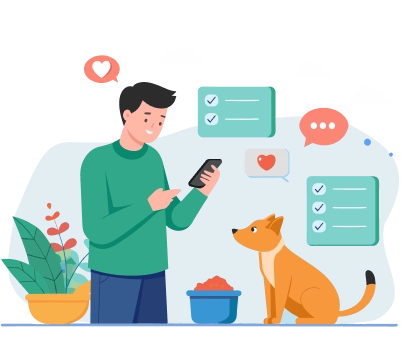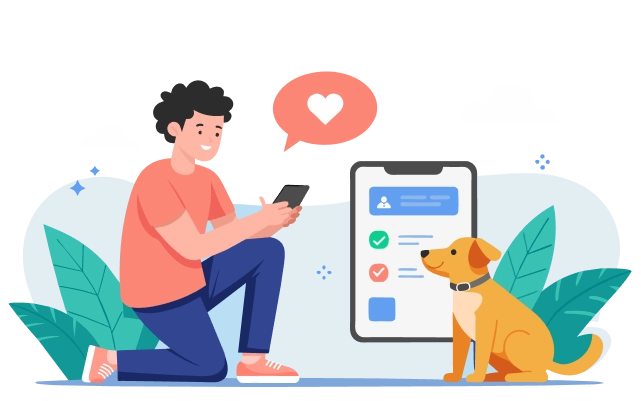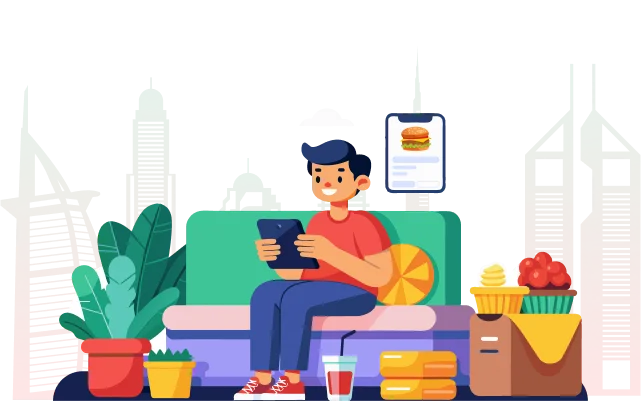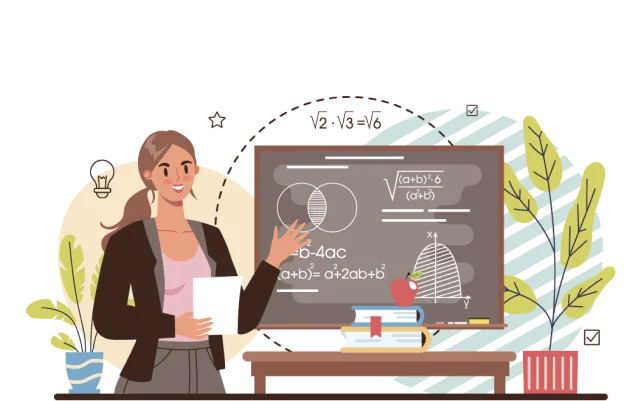A random happy bark, a worried whimper, or a howl, makes the dog owners think what they are trying to communicate. Such interest made dog translator apps popular, promising to translate the sounds of dogs into human language.
The idea of a dog language translator could seem like it's straight out of a sci-fi film, but with AI and sound recognition development, such apps are getting attention. A lot of pet owners are excited to use a pet translator app in order to get a better idea of what their dog feels. With millions of downloads across app stores, some of these apps claim to interpret barks and even allow humans to "speak" to their dogs using simulated dog sounds.
But do these apps actually work? Or are they just a fun gimmick? In this article, we’ll explore the technology behind dog translator apps, the science of canine communication, and whether these apps are truly effective or simply a novelty.
Custom Pet App Solutions for Startups & Entrepreneurs
From pet adoption platforms to AI-based translator apps, we develop high-quality, scalable pet app solutions.

How Do Dog Translator Apps Work?
Dog translator apps depend on AI, machine learning, and sound analysis to translate animal noises. Such apps purport to translate dog barks, growls, and whines into words or feelings that a human can understand. But just how do they really work?
AI and Machine Learning in Dog Translation
majority of dog language translation apps rely on machine learning algorithms that have been trained on sound databases of dog vocalizations. Thousands of barks, whines, and growls have been recorded and stored in these databases, sometimes sorted by dog breed, size, and behavior. By examining the pitch, frequency, and pattern of the sounds, AI tries to associate them with human emotions such as happiness, excitement, or distress.
There are some pet translator apps that have the additional option of reverse translation. In this feature, the user can choose a phrase (say, "Do you want to go for a walk?"), and the app makes a dog-like sound as a response. The feature is intended to "speak" to the dog in a manner that imitates how dogs communicate.
Sound Recognition Technology
These apps utilize sound wave analysis to distinguish various forms of barks. For instance:
- Short, high-pitched barks can signal excitement.
- Low, sustained growls can mean warning or hostility.
- Repeating whimpering may indicate discomfort or anxiety.
There are even sophisticated dog translation programs that include neural networks that train based on feedback from users. When an application translates incorrectly, users can tell it what they really heard so future translations improve.
Limitations of Existing Pet Translator Apps
The concept has promise, yet free versions of dog translator app as well as even paid ones have some shortcomings:
- Lack of Context – Dog communication is not solely auditory. One bark can have multiple meanings based on context. AI has difficulty factoring this in.
- Individual Variations – Each dog has its own vocal style, just as humans have distinct voices. AI models cannot accurately interpret each dog's individual vocal style.
- No Body Language Analysis – Dog communication is dependent on body movements, ear positions, and tail wagging, which aren't analyzed by apps.
- Limited Scientific Backing – Although AI technology is better today, no generally accepted scientific evidence exists to support that such apps translate dog speech into human language accurately.
The Science Behind Dog Communication
Before we analyze that do a dog translator app can work, we must understand how dogs actually communicate. Different from humans, dogs communicate using sounds, body language, and smell. Let’s understand more:
How do Dogs Communicate?
Dogs use three primary forms of communication:
Vocalizations
- Barks – May signify excitement, alertness, or frustration.
- Whines – Typically show discomfort, anxiety, or attention-seeking.
- Growls – This may be a sign of aggression, but some dogs growl as a play signal.
- Howls – Sometimes a method of long-distance communication, found in some breeds such as Huskies.
Body Language
- Tail wagging – A wagging tail does not necessarily signify happiness; position and speed are important.
- Eyes and ears – Soft eyes on a relaxed face indicate happiness, and pinned ears and big eyes indicate fear or aggression.
- Posture – A tense posture might indicate alertness, while a play bow (front legs extended, back up) indicates play invitation.
Scent Communication
Fictional nomadic wolves do not mark their urine with pheromone scent, but in reality, dogs have an exceptionally well-developed sense of smell and use scent-marking (urination, pheromones) to signal information about themselves.
This is something that no dog translation app is able to interpret yet.
Why Translating Dog Sounds Isn't Enough
Because dogs communicate through a combination of sound, motion, and odor, translating dog sounds in isolation from their action and scent is extremely inaccurate. Try learning a human dialogue by only hearing their tone of voice, and never seeing their facial expressions or body language. That's why pet translator apps tend to be deficient.
Scientific Research on Canine Communication
Several investigations have looked at whether dogs' barks can be translated properly:
- Animal Cognition Study (2017) – A study in 2017, which was published in Animal Cognition, discovered that dogs do utilize distinct sounds to express emotions such as excitement and fear, yet interpretation is also based on sound and context.
- Eötvös Loránd University (2021) – Researchers at Hungary's Eötvös Loránd University in 2021 discovered that dogs are able to identify human emotion from tone of voice, yet AI found it difficult to make the same judgments from dog sounds.
- Human vs. Canine Communication – Some research implies that dogs modulate their sounds when communicating with humans but not with other canines, further making AI-driven translation challenging.
Do Dog Translator Apps Actually Work? Hype vs. Reality
The prospect of a dog translator app to enable humans to comprehend their companions is appealing. But the big question still exists—do apps actually work or are they purely a gimmick?
Numerous pet owners have tried dog translation apps, and the results are hit-or-miss. Some users report their dog's barks are accurately translated to "happy" or "hungry," while others report the translations as spurious and erratic. But what does science have to say?
Research revealed that dogs reserve different barks for different occasions, like warning owners of threats or frustration. These barks are not universal, though—it is possible that every dog expresses a feeling differently. As a result, a dog translator app free or paid, based on generic AI algorithms, can't interpret the unique vocal style of any dog accurately.
Additionally, animal behavior experts contend that the majority of pet translator applications are not scientific. Although speech recognition in humans has been improved by AI, it cannot decode the language of dogs because it does not have a formal vocabulary.
Are These Apps Just for Fun?
Although dog translator apps do not offer actual translations, they can be a nice way for pet owners to interact with their dogs. Some even have features such as:
- Recording and playback of barks – Enabling users to study various dog sounds.
- Simulated dog sounds – To observe how dogs respond to various sounds.
- Simple mood interpretation – Offering general emotional states based on bark frequency.
In the end, pet translation apps must be viewed as entertainment and not a communication method. They can make owners feel more attuned to their animals, but they must not substitute for actual observation and training.
Can We Ever Really Translate Dog Language?
Whereas advancements in artificial intelligence will enhance dog communication technology, there may never be a flawless human-to-dog translator. Why? Dogs don't "speak" in a formal manner like humans. Their communication is situational and instinctual, rendering it difficult to establish a general translation system.
But future pet translation devices can still assist pet owners in having a better sense of their dog's feelings and requirements. Rather than translating languages, these devices can give contextual information, making it easier for pet owners to interpret their dog's actions correctly.
Top Dog Translator Apps: Do Any Stand Out?
In spite of the scientific shortcomings of dog translator apps, numerous pet owners continue to find them fun and helpful to interact with their animals. Some apps purport to translate barks and enable humans to better understand their canines. Do any of them actually live up to it?
Most Popular Pet Translator Apps in the Market
Following are some of the most popular dog language translator apps in the market today:
1. Dog Translator Simulator
One of the most widely downloaded pet translator apps for iOS and Android.
Purports to examine barking and offer up what a dog may be "saying."
Also features simulated dog sounds to observe how pets respond.
Reality Check: It's mainly a novelty and doesn't translate anything accurately.
2. Human-to-Dog Translator
Permits owners to "speak" with their dog by choosing from a set of pre-recorded dog noises.
Users can select a phrase (such as "Let's go outside"), and the app will produce a bark.
Reality Check: Some dogs react to the sounds, but they might not get the meaning.
3. Pet Translator – Talk to Your Pet
Utilizes AI to map a dog's bark to pre-defined emotional states.
Claims to identify basic moods such as happiness, excitement, or frustration.
Reality Check: The AI is not derived from scientific research, so the output is not always accurate.
4. My Dog translator
Records barks and gives a quick translation.
Has a fun interface for playing with pets.
Reality Check: Best used as a novelty app, not an actual translator.
Are Any of These Apps Worth Using?
Though none of these apps can actually translate a dog's language, they are still fun for owners to use. The most effective way to make use of them is to watch your dog's response instead of taking the translations at face value as being 100% true.
The Pros of Dog Translator Apps
- Fun and Entertaining – Many pet owners like to try these apps simply for fun.
- Promotes Pet Interaction – Sound-enabled apps can entertain dogs in a playful manner.
- Raises Awareness – Certain apps encourage owners to become more aware of their dog's vocal behavior.
The Drawbacks of Dog Translator Apps
- Not Scientifically Precise – There is no app that has been scientifically proven to translate dog language accurately.
- Restricted to Sounds Only – Apps fail to consider body language, which is important in dog communication.
- Can Lead to Misinterpretation – Depending on a translation app may lead to misunderstanding or misinterpretation.
Who Might Benefit from These Apps?
New dog owners who would like to know more about dog sounds.
- Kids who love to interact with pets in a playful manner.
- Anyone who is seeking a recreational pet-related activity.
But if you want something that can truly communicate with your dog, these applications are not the answer. You would instead spend time with your pet, familiarize yourself with their own vocabulary, and learn their body language. That will always be the best means of communicating with them.
Launch Your Petcare Business App Now
Let us help you develop a custom pet care tech app that stands out.
Conclusion
Though dog language translator apps will potentially get better in the future, they can never substitute the strong bond that results from true interaction with your pet. Your dog does not require a translator app—they merely need you to listen, watch, and look after them.
At Gojek Clone App, we invite pet owners to venture into new technologies while still emphasizing actual-world bonding with their pets. Want to know the latest pet tech? Keep reading Gojek Clone App for more!
FAQS
What is a pet translator app and how does it claim to work?
Pet translator apps analyze your dog’s sounds using AI and sound databases. They try to match barks or whines to emotions, but translations are basic and not scientifically precise.
Can a dog translator app accurately understand my dog’s emotions?
These apps guess emotions like happy or sad from sounds, but dogs use complex cues. The apps can't fully interpret body language or context, so they’re mostly for fun, not accuracy.
Are there any pet translator apps backed by real science?
Some apps claim science-based development, using AI and studies of vocal patterns. However, most lack solid research or expert validation, so their reliability remains low for serious use.
Which dog translator apps are the most popular right now?
Trending apps include Dog Translator Simulator and MeowTalk. They go viral for their fun features but don’t provide scientifically accurate results. They’re more entertainment than real communication tools.
Should I trust these apps for serious pet behavior concerns?
No, these apps are made for amusement, not behavior analysis. For real issues, consult a vet or dog trainer. Apps can’t replace expert help when it comes to pet health or behavior.











